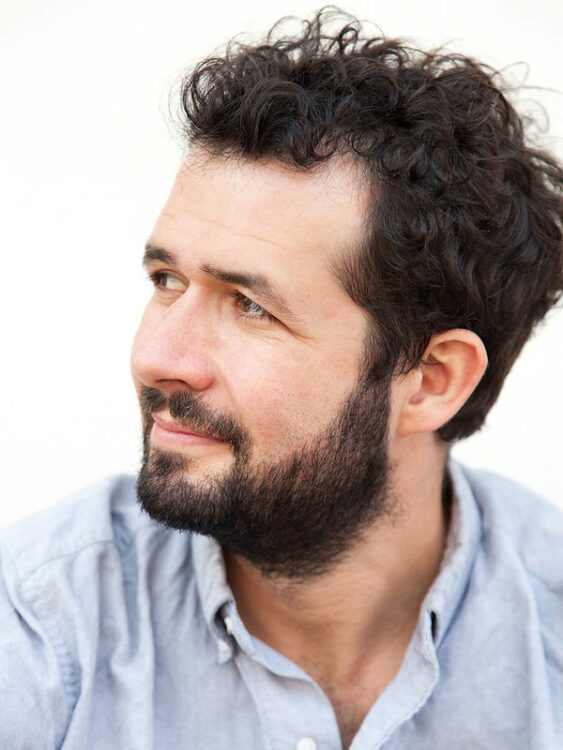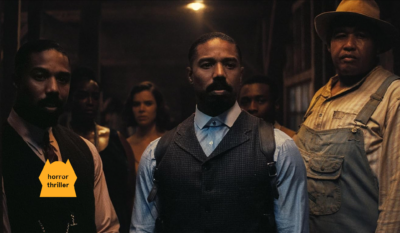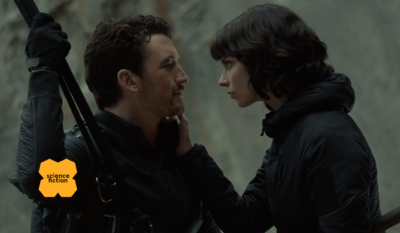Flee follows an Afghan refugee's journey with his family to find safety in Europe. Years later he recounts the story to a friend who documents the story through animation.


Flee is a great argument for animation's place in documentary filmmaking. Though we've seen refugee stories before, this one is specific and intimate. Filled with nuances about trauma, sexuality, and finding home. An emotional, visceral, and ultimately cathartic experience.
![]()

At the start of Flee, which premiered in the World Documentary section of the 2021 Sundance Film Festival, we watch a man lie back in a bed. We see him from a bird's eye view. He's animated, but something about the animation tells us that this is drawn from life. Offscreen we hear director Jonas Poher Rasmussen ask the man, “what does the word ‘home' mean to you?”
At that, the man, Amin, begins to transport us back to 1984 Kabul, Afghanistan. As he describes the place and time, the rough charcoal sketches morph into vivid colors as we meet his family. He begins to talk about them — his mother, father, brother, and sisters. However, he quickly cuts off the interview saying, “it's my past. I can't run away from it. I don't want to.” But he can't continue, which Rasmussen understands.
That's because Rasmussen, we learn, is old school mates with Amin. He describes seeing him on the train. He describes him in great detail. Decades later they're still friends and Rasmussen has taken interest in telling Amin's story of fleeing Kabul as the Taliban took control of the city and his journey to eventually settle in Denmark. And the way Rasmussen tells it is the way any other person would learn about their friends' past. Flee feels like a story that you lie back in a bed and listen to with the storyteller right next to you — this quite literally happens.
This might be a good place to mention that the entire film is animated. That's in large part to protect Amin's privacy. At the same time, it allows us to see his memories, as fickle as they are like all memories, as he remembers them. Months later he sits back down to recount the story. And from there, Flee captures you and doesn't let you go until it cuts to black.

There's so much to unpack in Amin's story, but I will leave that for you to uncover when you watch it. And I'm telling you now, watch it when it comes out — thankfully Neon has acquired the film for distribution (the first of the fest). Instead, I want to talk about what makes Flee so effective as a documentary.
Documentarians often find archival footage to piece together the story they're trying to tell. They fill in the gaps with interviews or reenactments. Instead, Flee lets Amin tell the story. Rasmussen simply gives us a way to see it all unfold. Hearing Amin's voice as it wavers, the animation often following his lead, makes the entire experience feel intimate. Like he's telling it just to us.
Periodically, we'll flip back to the present, which we also see in the same hand-drawn animation. It only heightens the intimacy. There are asides about how that past and trauma has shaped who Amin is now, especially his relationship with his partner Kasper, who hopes to move to the countryside with Amin. However, he can tell something is holding him back.
We learn through Amin's story why he's so hesitant to take the next step with Kasper. He doesn't tell us, but we're able to figure it out. In a gorgeous and poetic scene right before the end of the film, we watch Amin return home to Denmark in the present after a business trip. Kasper is off in the distance waiting for him in the busy airport. Amin stares from afar and says in voiceover, “even when you're in a safe place, you're on your guard.” Quickly, he adds, that maybe that's something that needs to change.
Flee pushes the medium of documentary filmmaking forward by finding a way to get us to both sympathize and empathize with Amin's feelings through our own experiences. It was almost a visceral experience. I experienced nothing close to the hardships Amin experienced as he tried to escape Afghanistan by way of Russia through human traffickers. However, the film's intimate understanding of the story it was telling made it possible to find a way to apply his story to my own life. Even in a safe place, you're on your guard. Maybe it is about time to change that.
ADVERTISEMENT
More movies, less problems
- Jordan Peele Unleashes the First Trailer for ‘HIM'
- ‘Sinners' is the best movie of the year | movie review
- Romantic sci-fi thriller ‘The Gorge' hits its mark | movie reivew
Hey! I'm Karl. You can find me on Twitter and Letterboxd. I'm also a Tomatometer-approved critic.
💌 Sign up for our weekly email newsletter with movie recommendations available to stream.
ADVERTISEMENT
💌 Sign up for our weekly email newsletter with movie recommendations available to stream.
ADVERTISEMENT
Hey, I'm Karl, founder and film critic at Smash Cut. I started Smash Cut in 2014 to share my love of movies and give a perspective I haven't yet seen represented. I'm also an editor at The New York Times, a Rotten Tomatoes-approved critic, and a member of the Online Film Critics Society.


Comments are closed.